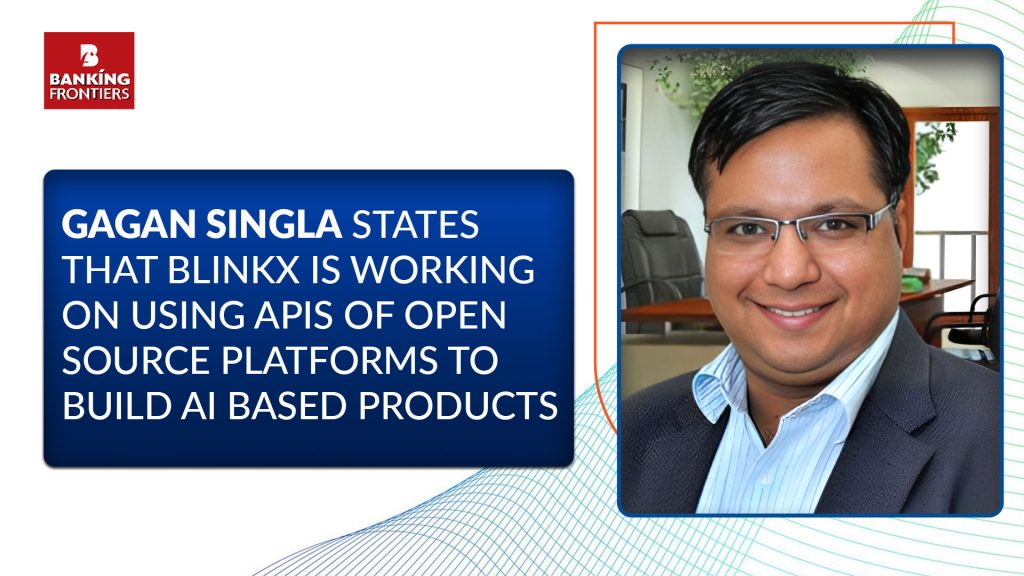3 fintechs show how they are leveraging technology to drive businesses in various ways:

blinkX, an initiative of JM Financial, is a next gen InvesTech platform. Created in 2022, it offers a wide range of financial products, including broking, wealth management, advisory, and lending. StoxBox is a technology-based value broker that offers a wide range of financial products designed to supercharge investing game, with its flagship product ProTips. StoxBox is a brand of BP Wealth, the parent company, founded in 1987. PolicyBoss.com, founded in 2013, is an insurtech with a CAGR of 30% over the past 5 years. It is the online brand of Landmark Insurance Brokers. Technology muscle is the common factor for all these 3 entities.
Cloud, Data, AI, ML, Customization
One area of technology focus of blinkX has been on building in-house products with centralized data management through cloud, data lakes and data mesh. blinkX sees a lot of potential for AI and ML, when it comes to gathering richer insights from data and it has already initiated that. It is focusing on providing hyper-personalized user experience using the latest AI and ML models. Gagan Singla, MD at blinkX, points out: “We are working on using APIs of open-source AI platforms to build AI based products. The idea is to leverage big data and new NLP model to provide exceptional experience to our users. A secure cloud-based solution is our first priority on the technology front. We look to leverage AI and ML to improve the customer experience.”
One of the cornerstones of the business model at StoxBox is mass customization. Yuvraj Thakker, MD at StoxBox, says: “Instead of customization for an individual client, we customize for a bucket of clients. This would have been absolutely impossible without the use of technology.”
The first 2 projects that the StoxBox tasked Yuvraj with were to increase the number of products and to ensure that these products are delivered through the use of technology. In 2013, StoxBox came up with the first trading app. Over the last 5 years it has supercharged itself using artificial intelligence, decentralized finance and blockchain. The largest single technology that has led to the rapid expansion of the broking industry is cloud.
StoxBox has a quantitative research division, which focuses on machine learning. The second side of the business is the retail facing one. Yuvraj elaborates: “We use machine learning for PMS products and stock recommendations for mass retail. The greater utility of ML for us is mass customization. This helps us to pitch the right product to the right client at the right time. These technologies do not need to be that fast, but they need to be robust. We have migrated to cloud for the hardware part.”
PolicyBoss has acquired Datacomp Web Technology, a well-established insurance & financial services automation software player. By leveraging analyzed customer data, insurers can refine risk assessment models, pricing policies and reduce potential losses. Kevin Menezes, Executive Director at PolicyBoss, informs: “Insurers can automate claims handling, verify information, and expedite settlements, which leads to improved customer experience and cost savings for insurers. Advancements in AI, ML, data analytics continue to drive innovation in claims personalization. Also, concerns regarding data privacy and ethical use of customer information should be addressed.”
GPT, FPGA, CDP, CRM, Trading
Customer support and basic level information exchange have moved on to chat supported by GPT. Yuvraj points out: “Mainly I found benefit of ChatGPT for my organization in client servicing. It helped us in reducing our client servicing cost and to increase our client engagement. Another unique use of the open AI network is stocks GPT. A lot of research has moved on to stocks GPT but it is still not available in India.”
The growth of Field Programmable Gate Arrays (FPGA) technology helps in stock insights, trading and customer servicing. StoxBox also extensively uses it. Yuvraj informs: “We have deployed FPGA technology in co-location of NSE and BSE. This helps us in execution in nano second. They allow us to go for tick to trade faster. When we are talking about high-frequency trading, it is a mixture of hardware and software. The software needs to be lightweight.”
blinkX focuses on the young tech savvy millennials. Since blinkX’s platforms are largely web and mobile driven, it prefers customers on DIY format. Gagan indicates: “They can actually leverage our rich content offerings for making better decisions. We are also looking at new parents with a long-term perspective.”
blinkX started building in-house CDP (customer data platforms) from the start and even before the development of apps started. It is leveraging CRM analytics and predictive modelling for driving B2B sales as well as capturing multiple customer interactions and stratifying them based on a sophisticated CRM. Gagan further reveals: “Cloud based CRM is our primary focus. AI helps us personalize service offerings based on insights gleaned from data. Our CRM integrates seamlessly with the other business systems towards improving workflow and operational efficiency.”
PolicyBoss has served over 5 million customers till date. For speedy claim filing by customers, it has automated fetching of policyholder’s basic information like name, address, contact number and other personal details. For motor insurance claims, information like type of vehicle, vehicle number, insured declared value, no claim bonus is auto-fetched. Some key data types used in personalizing claims today include personal information, policy information, incident information, medical records, financial information, and insurance claims. Kevin elaborates: “Claims history data helps insurers assess risk and tailor coverage and pricing accordingly. These data types help assess risks accurately, streamline the claims process, and enable providing personalized services to policyholders. For motor claims, by virtue of personalized claims data, we can analyze the prevalent market trends, make/model-wise type of losses, location wise loss occurrences etc, which helps in claim experience analysis.”
For FY 2023-24, PolicyBoss aims at serving 8000 claims against 7100 last FY. Kevin reveals: “This can be achieved by tech savvy techniques, building seamless claim intimation, handling tech process with insurers and personalizing servicing for the customers.”
IT Team, Capex, Opex
Other than technology, a large portion of StoxBox’s budget goes into equity research. Yuvraj reveals: “Around 70% of my total expenses goes towards tech. We have 3 engineering teams that are directly on our payroll. So far over the years, our capex has been Rs280 million. We spend around Rs20 million on technology every month. Internally we have around 45 people, who are the main strength in the core IT department.”
PolicyBoss aims to give insurance agents the hue of being digital partners, who build relationships with customers/prospective customers through technology. Kevin informs: “With in-house tech and claims team, we have launched an exclusive B2B2C platform called PolicyBoss Pro.”
Return On Tech Investment
Yuvraj proudly endorses increasing usage of technologies by saying: “Before 2014, tech was considered a small part of our business and it was considered as a support system. At the moment I will credit 100% of my returns to technology. Because, if we don’t have technology, we do not have the business. So now technology is not a support or an enabler but a staple.”
blinkX would be investing in building its data insight generating abilities. There will be an effort at workflow automation tools to streamline operations and reduce costs. Gagan hints: “While moving on the immediate opportunities like chatbots, we would be looking at neural networks and closely working with strategic partners, vendors, and startups to drive innovation and get access to best in class ideas.”
Evaluating Tech & Vendor
A number of people sit in committees of blinkX that evaluate technologies and vendors. The relevant committees focus on cross functional skills covering technology, mid-office, back-office, marketing, finance, and compliance. The committees set the agenda and defines the evaluation criteria, post which the request for proposal (RFP) is sent to shortlisted vendors. Once the vendor offer meets the company’s needs, a detailed due diligence check is done, including reference checks. Gagan says: “The final, collective decision for technologies and vendors is focused on performance, track record, service ecosystem and price. Technology review is an ongoing process with a continuous scan of performance and the alternate stack available.”
AI-led Talent Tracking, Tools
Recruitment techniques at blinkX entail the use of data analytics to asses candidate profile, data driven hiring decisions, and use of AI powered applicant tracking systems for top talent positions. Gagan argues: “We are hiring top talent every year from tier-1 tech colleges and B-schools like IITs and IIMs. There will be e-learning modules and digital certifications. Our leveraging of technology will also extend to fraud detection and fraud reduction.”
Insurers have developed various software applications and technologies. Claims Management Systems (CMS) are used to streamline and automate claims process. These systems include digital claims filing, workflow management, document management and communication tools to facilitate personalized interactions with policyholders. Insurers employ predictive analytics software to analyze large volumes of data and identify patterns, trends, potential risks. Kevin explains: “By applying advanced algorithms, insurers can predict the likelihood of fraud, estimate claim costs and personalize claims processing, based on the policyholder’s unique circumstances. These systems employ advanced analytics, data mining techniques, and pattern recognition algorithms to detect and prevent fraudulent patterns in claims submissions, ensuring that legitimate claims receive appropriate attention.
Insurers utilize chatbot and virtual assistant technologies to provide personalized customer support and claims assistance. Kevin adds; “These AI-powered tools can guide policyholders through claims process, and provide personalized information.”
Read more;







